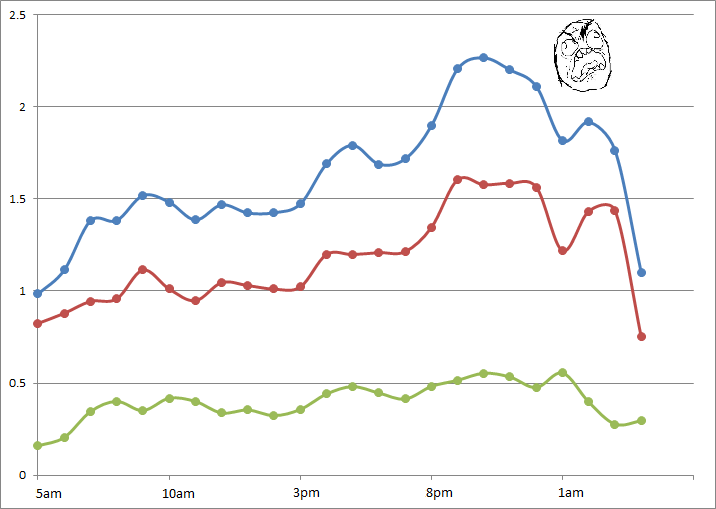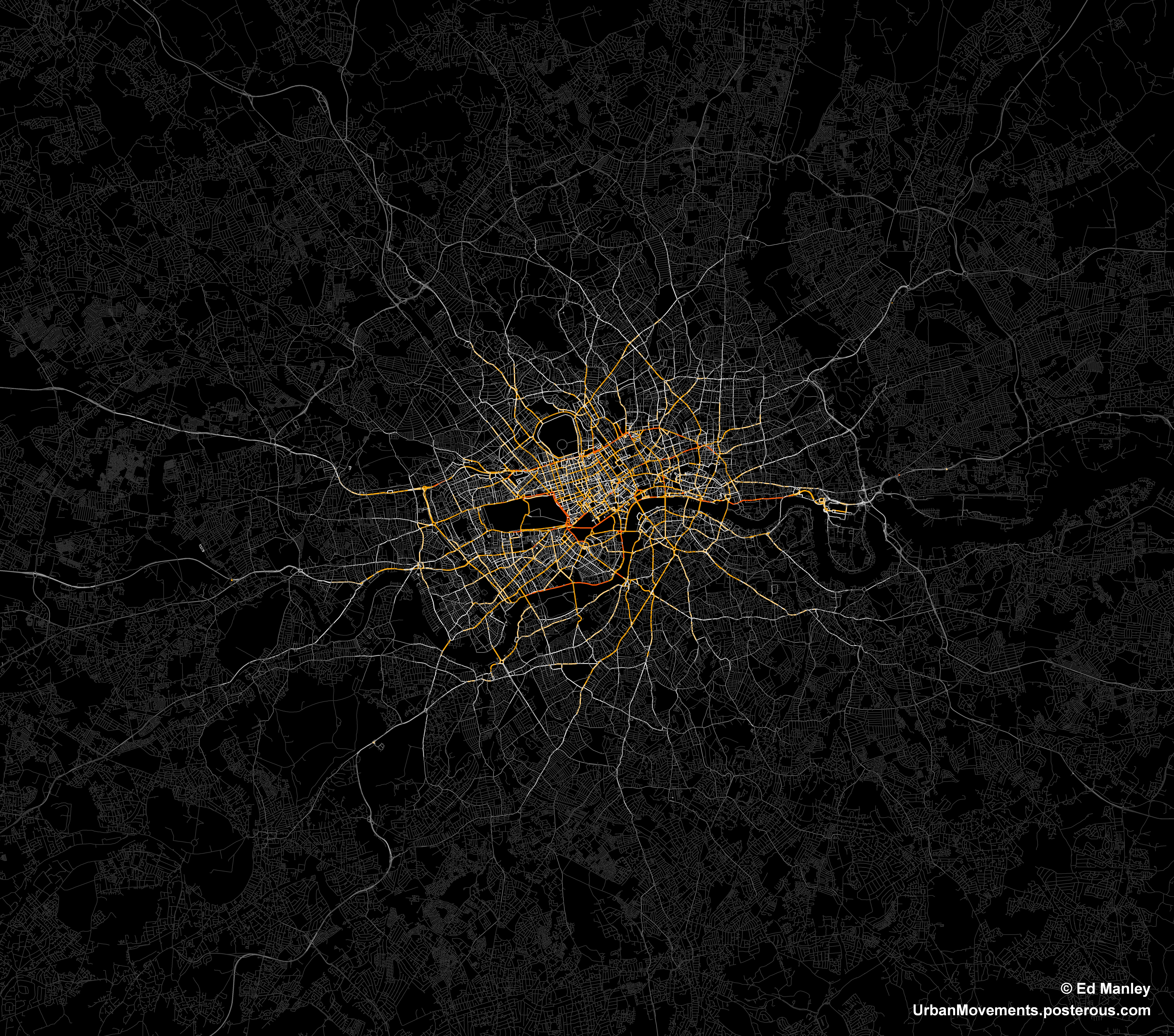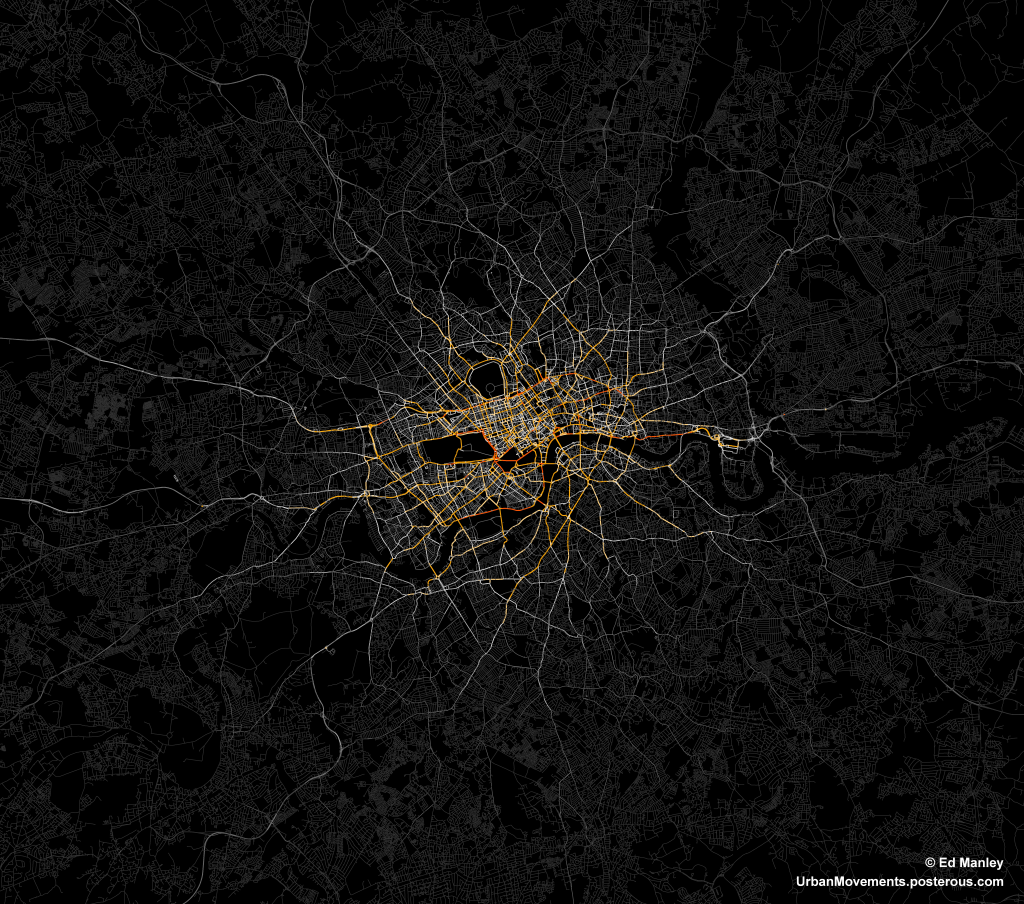Amanda Erickson put up a nice, simply visualisation of what life might be like in a future of driverless, automated cars. Check it out.
[vimeo http://vimeo.com/37751380]
Two things sprang to mind while watching this – first, how terrifying this might be for a passenger in one of these cars, and second, haven’t I seen this sort of thing somewhere else before?
Well, yes, I showed the following video in a lecture last month as demonstration of self-organisation. To me, the patterns look similar – at the higher level you see chaos, but when you observe the actions of individual’s there is usually a rational stream of thought behind the actions they are taking – normally to get to their exit road. Judge for yourself.
[youtube http://www.youtube.com/watch?v=mr5Gssaxl6g&version=3&hl=en_US]
I think the stark similarity seen between these two videos raise interesting questions about what we consider as progress in the urban realm. Bare with me as I attempt to explain.
The driverless or automated car is often seen as the natural future of private transportation*, with one of its main benefits being the apparent offer of optimal organisation of traffic flows (e.g. no congestion). And indeed when look at the first video, everything works and works well, perhaps even optimally. But then you look at the second video, and you essentially have the same thing, created solely through the activity of individuals.
It is strange therefore that a fully optimised technical system is generally deemed necessary and superior. When people are left to their own devices, to ‘sort it out between them’, people invariably do. Traffic in Hanoi is not just the only example of this type of self-organisation – the Internet itself is a creation of human ingenuity. Following Monderman’s ideas on Shared Space, perhaps all of these traffic regulations, signage and restrictions actually reduce our need to think about what we are doing. They reduce and remove our ability or will to self-organise, and to the deficit of us all.
So why don’t ‘natural’ answers to technical problems receive a better press? I suspect it is an issue of trust in the citizen. That threat that one person may mess up, and mess it up for the rest of us. Instead of facing the risk and accepting it as part of the solution, we surround ourselves with unnecessary and invasive mechanisms that carry out the task for us. They may cost a lot of money and not be any better than our current solution, but they feel like progress. It feels like things are getting better. So, yes, perhaps automated cars are indeed a thing of the future.
As ever, very interested to hear your thoughts on this.
* I’ve personally never been so sure – mainly because of the safety element, and that fact that many people actually enjoy the process of driving…





